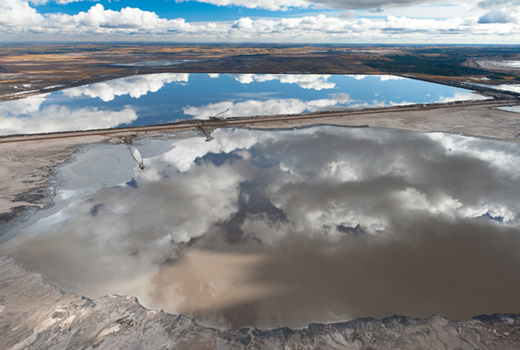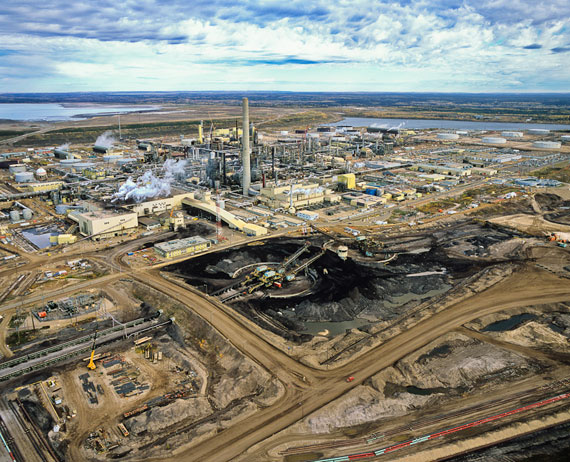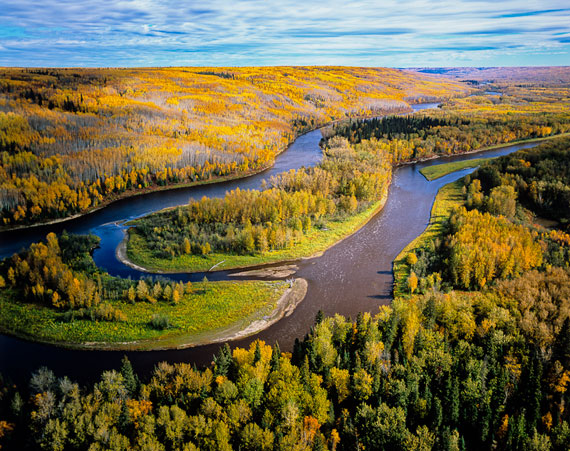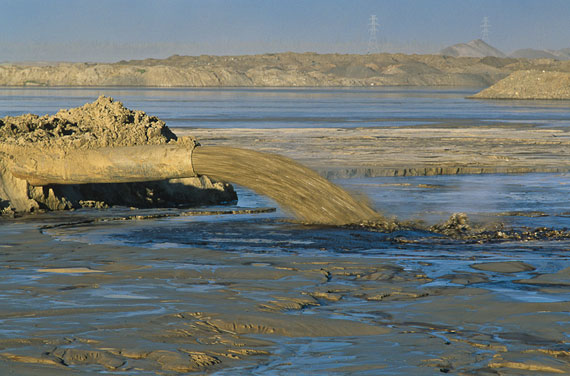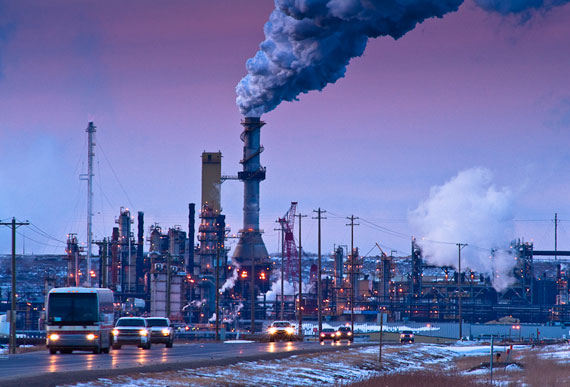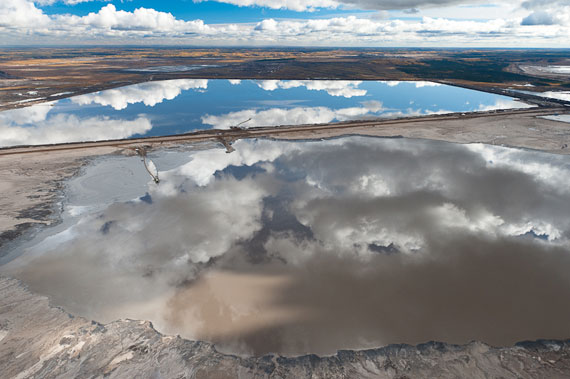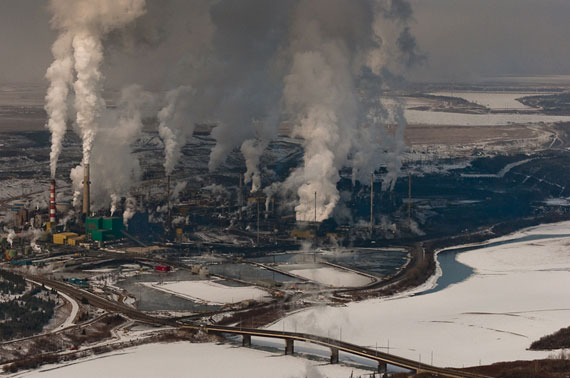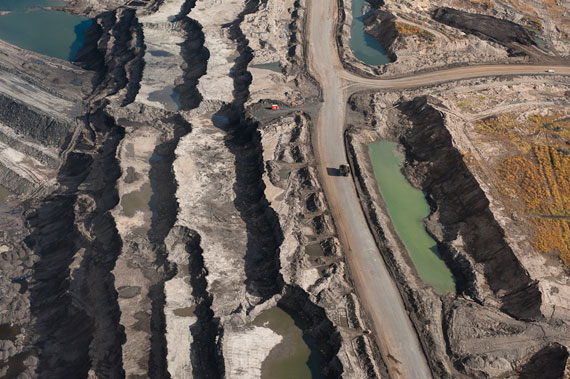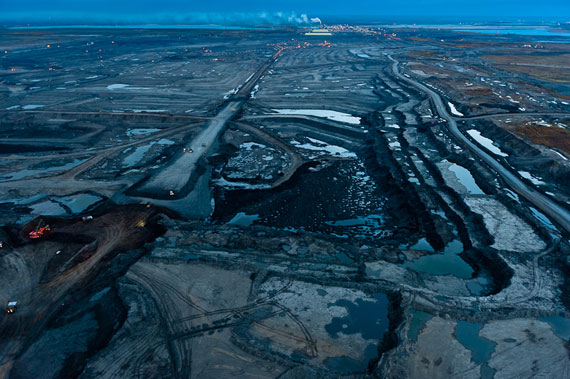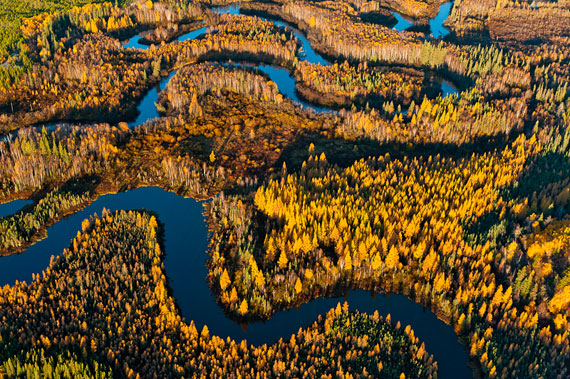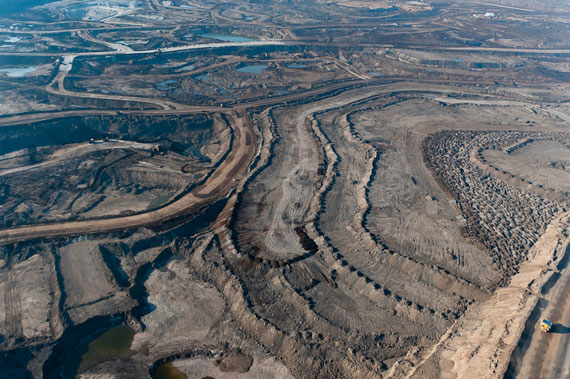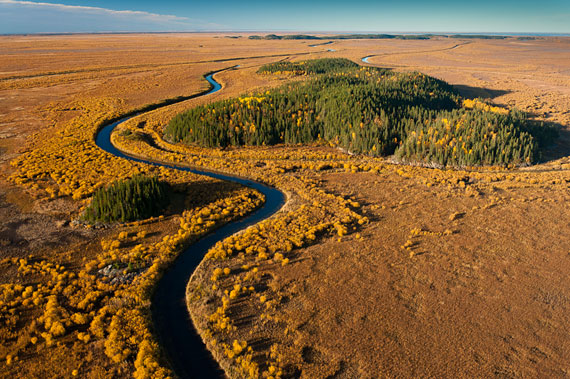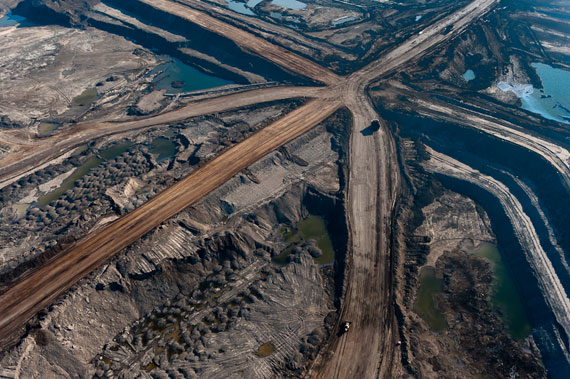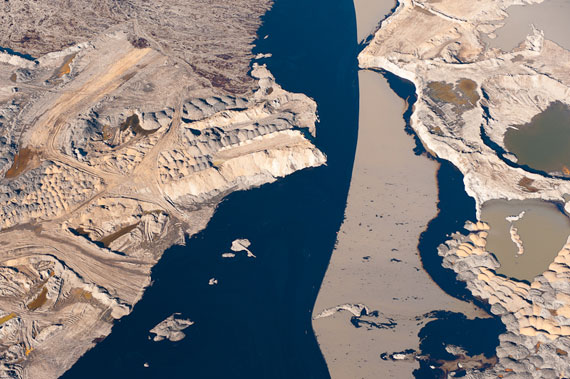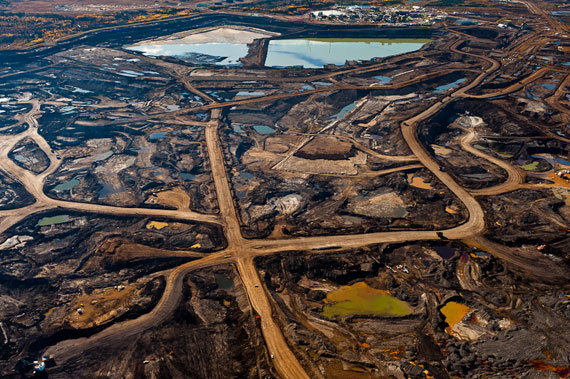Alberta Tar Sands The True Price of Petroleum
Although not widely known, Canada’s Alberta Tar Sands are both the world’s largest oil reserves outside Saudi Arabia and America’s single greatest source of oil. The mining operations and tailings ponds are so vast they can be seen from outer space by the naked eye. These tailings ponds are the largest toxic impoundments on Earth and lie in unlined dykes mere meters from the Athabasca River and downstream from indigenous communities, which are being poisoned by toxic seepage into the food chain. And, the Tar Sands are Canada’s single largest source of carbon emissions. Located in northern Alberta, they lie in the heart of what is considered by many to be the largest remaining forest ecosystem on the planet. Canada’s boreal forest region is estimated to be up to 95 percent intact, and it stretches across northern Canada from the Labrador Sea and Atlantic Ocean to the coastal mountains of northern British Columbia.
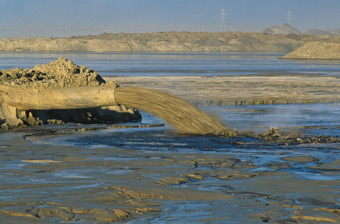
© Garth Lenz
Refining the tarry bitumen, which lies under the wetlands and boreal forests of northern Alberta, requires more water than other oil refining processes. Three to five barrels of freshwater are used to produce one barrel of tar sands oil. Ninety percent of the water taken from the Athabasca River is then dumped into vast toxic tailings ponds adjacent to it. Syncrude alone – just one of many operations in the Tar Sands – dumps 500,000 tons of toxic tailings into just one of their tailings ponds everyday. Enough toxic sludge is produced each day to fill 720 Olympic-sized pools. Toxins leak into the Athabasca River from Suncor’s now “reclaimed” Tar Island pond at a rate of one million gallons per day – the equivalent of about two Olympic-sized pools. Approximately 20 of these toxic lakes lie on either side of the Athabasca River.
Several scientific studies now indicate that a cocktail of deadly carcinogenic toxins from leaking ponds, watershed destruction and air pollution are finding their way into the river and food chain of downstream indigenous communities like Fort Chipewyan. In Fort Chipewyan, rare cancers previously unknown in the community are now appearing with alarming frequency. For example, bile duct cancer, which usually appears once per 100,000 individuals, has appeared in three separate cases in the past few years within a community of just twelve hundred.
Canada’s Prime Minister, Stephen Harper, has called the Tar Sands “an enterprise of epic proportions akin to the building of the pyramids or China’s Great Wall, only bigger.” He also maintains that they’re the key to securing Canada’s place as a “global energy super power.” More accurately, the Alberta Tar Sands are an immediate threat to the region and its 40,000 indigenous people who live downstream in the Mackenzie Basin. And, they have far-reaching global implications as well. The Tar Sands have been called “the world’s dirtiest oil” as their carbon footprint is almost double conventional oil. They are Canada’s single largest, and fastest growing, source of carbon emissions, producing as much CO2 as some nations, such as Denmark.
The Alberta Tar Sands have turned Canada into a petro state. The Canadian Federal government sees their development as the single most important economic engine for its future.
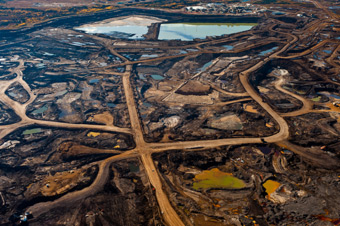
© Garth Lenz
And, the Tar Sands dictate, to a large extent, Canadian economic, environmental and foreign policy. They’re why, in spite of being one of the original signatories to the Kyoto accord, Canada has not made the slightest attempt to meet its commitments and has instead taken every opportunity on the world stage to undermine efforts to reduce carbon emissions to combat global warming. Canada now has full-time Washington, D.C. lobbyists dedicated to promoting the Tar Sands and to undermining American attempts to develop new carbon fuel standards. The Alberta Tar Sands have led Canada to abandon its role as a voice for global environmental sustainability. The country is very quickly going from being a respected moral and ecological voice on the world stage to being generally seen as an obstacle to progress on global warming.
The Alberta Tar Sands are considered to be the largest energy project in the history of the world. While bitumen deposits lie underneath 140,000 sq km of forest, the government has already leased or approved a remarkable area for either mining or in-situ production: 1.5 million hectares. That’s 20 times the size of the city of Calgary, 40 times the size of Denver or 17 times the size of Berlin. (Source: BioCarbon: http://www.globalforestwatch.ca/climateandforests/bitumenbiocarbon/BioCarbon_WEB_LR.pdf.) Approximately $200 billion have been invested in the Alberta Tar Sands. They currently produce more than 1.5 million barrels of oil per day. Within 20 years, they’re projected to produce four million barrels per day, increasing to five million a few years thereafter. Alberta Energy has boasted that the landscape being industrialized by rapid tar sands development could eventually accommodate one Florida, two New Brunswicks, four Vancouvers and four Vancouver Islands.
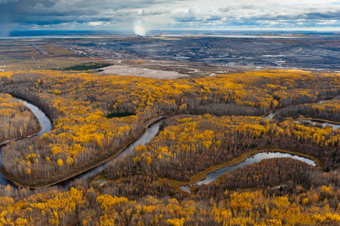
© Garth Lenz
In terms of global warming, Tar Sands’ impacts are devastating and multiple. The vast forests and wetlands of the boreal forest, which they lie under, are considered the most carbon-rich forest ecosystem on the planet. Storing almost twice as much carbon per hectare as tropical rainforests, the boreal forest is the planet’s greatest terrestrial carbon storehouse. To the industry, these diverse and ecologically significant forests and wetlands are referred to as an overburden – the forest to be stripped and the wetlands dredged and replaced by mines and tailings ponds. As tar sands’ expansion consumes more boreal forest and wetlands, it is releasing to the atmosphere all the carbon stored in this ecosystem. At the same time, Earth loses the long-term future carbon sequestration of these forests and wetlands. In turn, they are replaced by an industrial operation, which, as mentioned, produces almost twice as much carbon as conventional oil production.
However, the global reach of the tar sands is even greater than that. Pipelines pump this bitumen to the American Midwest and Texas for refining. In the process, these areas are importing many of the Tar Sands’ toxic impacts to their jurisdictions. The building of the proposed Alberta Clipper and Keystone pipelines will only increase this trend and its impacts.
And, the Tar Sands present further destruction. The rapid development of shale gas in northeastern British Columbia is driven by the Tar Sands’ energy needs. The proposed Mackenzie Valley pipeline was recently given government approval and will result in a $10 billion, 1200 kilometer pipeline and industrial highway built to bring natural gas from the Arctic Ocean to the Alberta Tar Sands. This will result in the rapid industrialization of the world’s third largest, and only largely intact, watershed basin. Only the Amazon and Mississippi basins are greater. Unlike these, the Mackenzie Basin is almost 100 percent intact.
On the west coast, the Enbridge “Gateway” pipeline will bring Tar Sands bitumen to Kitimaat on British Columbia’s northern coast, which is immediately south of Southeast Alaska. From there, massive tankers will navigate some of the most treacherous coastal waters, through the world’s largest remaining intact temperate coastal ecosystem, to deliver Tar Sands bitumen to Asia. Only a few years ago, a British Columbia Ferry full of passengers sunk in these waters. If, or more likely when, this happens to a Tar Sands supertanker, the ecological impacts of the BP Horizon oil spill may pale by comparison. Not only will such a disaster dramatically impact coastal British Columbia, but also Southeast Alaska, one of the last pristine places on Earth. Such a disaster will also, undoubtedly, create political tension between America and Canada.
That one project should have so much power to destroy so many lives and devastate Earth in such a profound manner is without measure or conscience. Only by working together can caring citizens of both countries stop this continuing catastrophe.
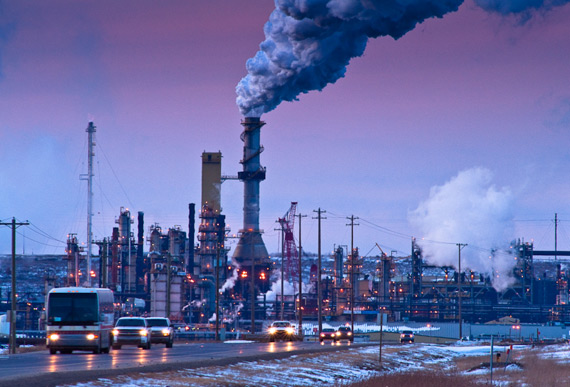
© Garth Lenz
A Slideshow of Alberta Tar Sands

